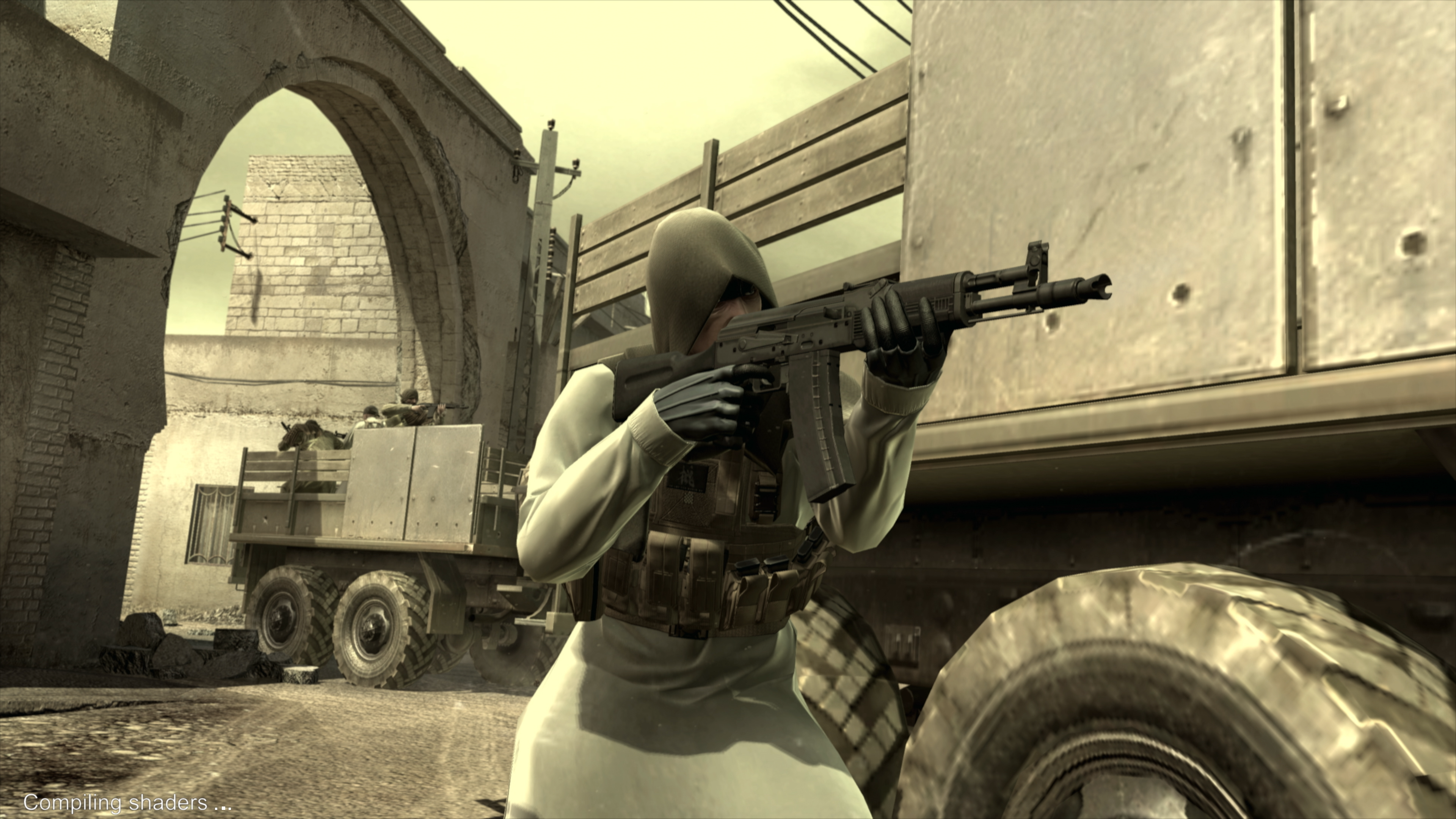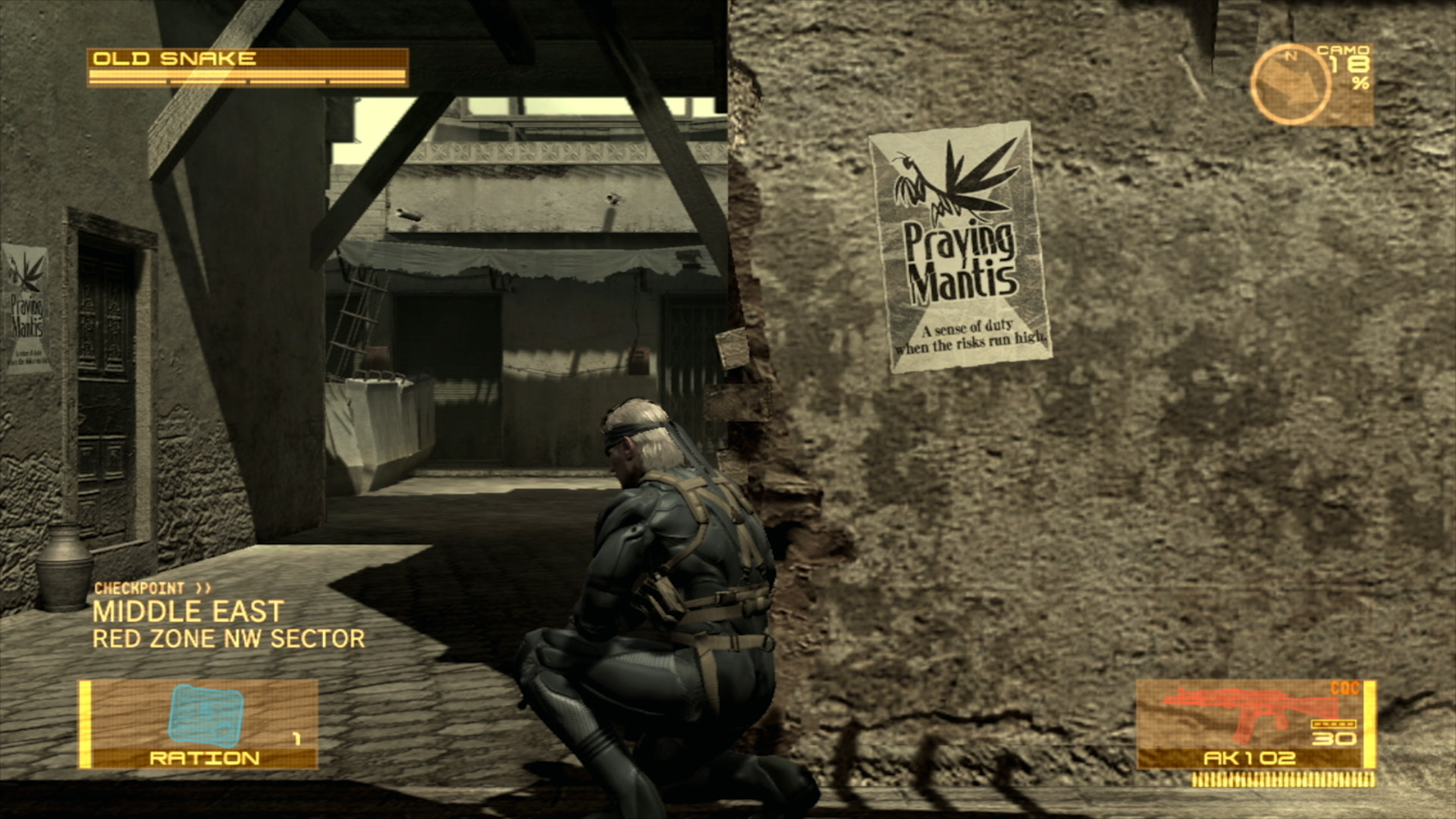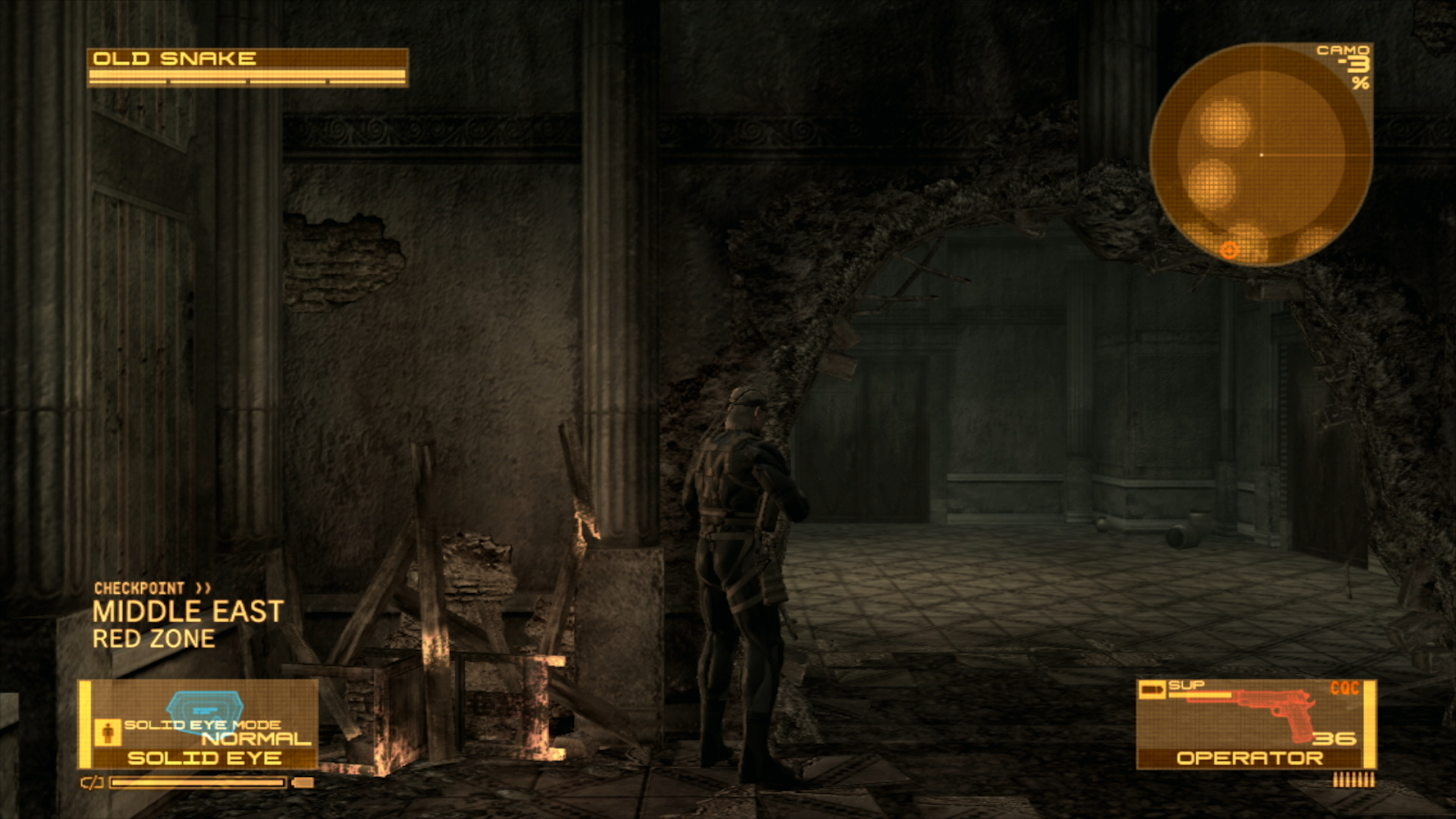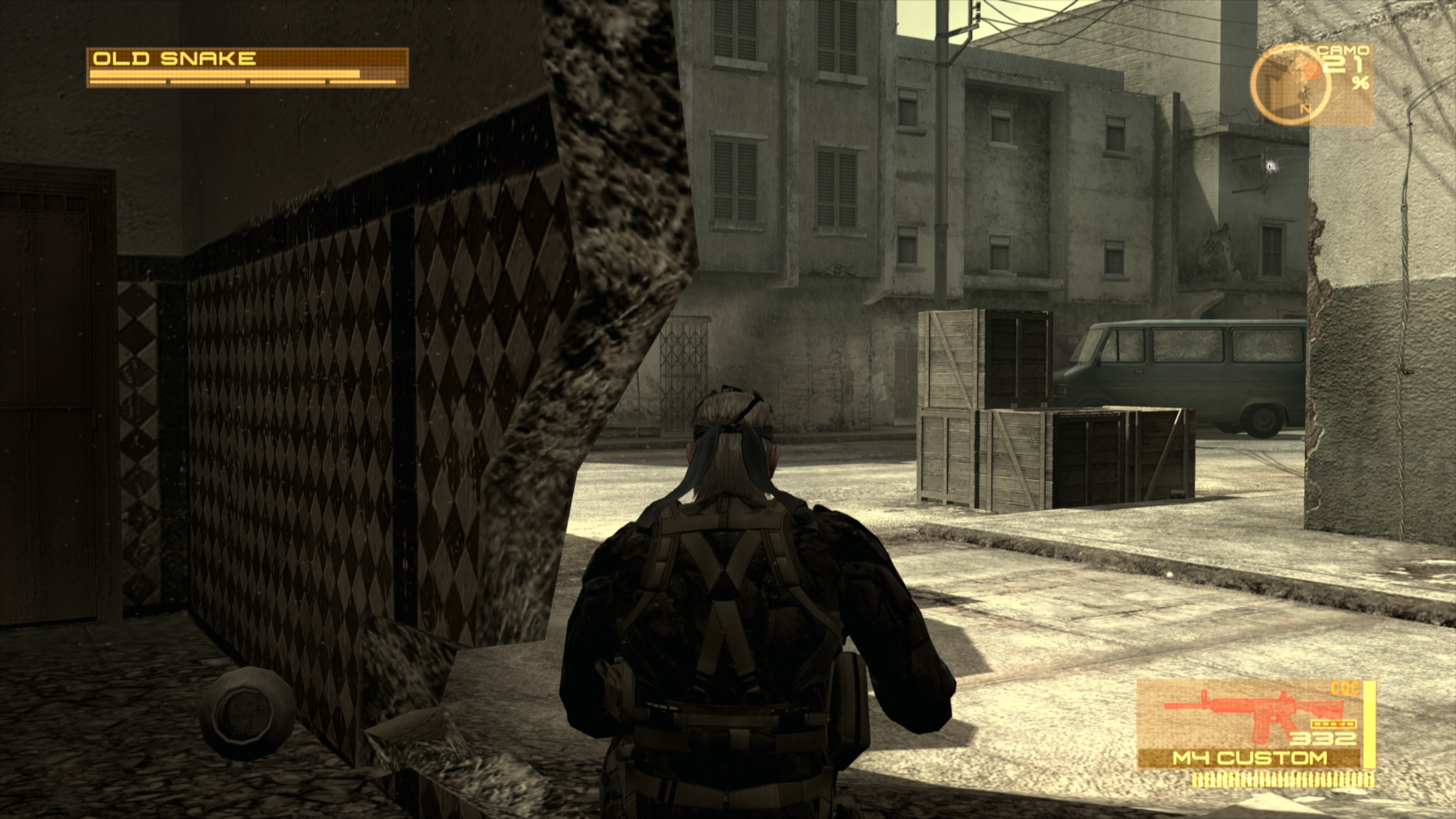At Digital Foundry, we always desire the highest possible frame-rates with new game releases but also understand this isn’t always possible, but Metal Gear Solid 4 is an interesting case as it’s a game that teased us with the possibility of 60 frames per second only to stomp on our dreams with its eventual release. Flash back to the Tokyo Game Show in 2005 and we saw a game trailer running flat out at 60 frames per second - a far cry from the final release, that mostly operated in a 20-30fps window. The game did run unlocked, however, so there were sparing sections where 60fps was possible - a teaser of the game it was supposed to be. This trailer was produced prior to receiving actual PS3 development hardware. It was likely built on a powerful PC and even then, it may well have been pre-rendered given the perfect frame-rate. While I have no insight into Kojima Productions development situation, I have spoken with other developers that were involved with the early days of PS3 and all of them have suggested that the final hardware was a stepdown from what was promised. So, bringing visuals of this calibre to the PlayStation 3 would be no small task. Metal Gear Solid 4 isn’t just an example of a game essentially locked to its original host system, it’s also a title that stands to benefit immensely from the resources of more modern hardware to bring us closer to that original vision - the kind of thing that Microsoft has achieved with some of the preservation efforts of its compatibility team: higher frame-rates, higher resolution. And that’s where RPCS3 comes into play. After years of work, this open source PC emulator can boot virtually any game and it’s capable of some remarkable feats in terms of improving original PlayStation 3 titles. This is no walk in the park bearing in mind that PS3 was arguably the last of the ’exotic’ console designs by virtue of its Cell processor - a collaboration between Sony, IBM and Toshiba. While the central ‘PPU’ core and even the Nvidia RSX GPU are relatively straightforward designs, Cell’s latent power comes from its SPU satellite co-processors, capable of phenomenal performance in their time. RPCS3 emulates the SPUs on CPU, and the more SPU use a developer used in any given game, the higher the burden in emulating the game at original speeds, let alone with the performance multiplier we want to hit 60fps. What this means is that to get Metal Gear Solid 4 running at 60fps requires a lot of computational power. To produce this video on this page, I used a Core i9 12900K - and not at its stock settings. RPCS3 is able to tap into the acceleration opportunities provided by the AVX-512 instruction set - which, unfortunately, Intel has disabled on the latest versions of the chip. Thankfully I have an older processor which does offer this functionality - accessed by disabling the slower ’efficiency’ cores. To cover off the GPU requirement, I used an RTX 3090 but I would expect that slower graphics hardware would achieve the same result - PS3 emulation is heavily CPU-limited. Even this is not enough, however, and I used a custom built of RPCS3 from CipherXOF that introduces a number of performance boosts specifically aimed at improving frame-rate in MGS4. Immediate impressions on booting the game are remarkable: Kojima’s team have historically produced artwork that retains its quality at higher resolutions and 4K brings out the best in those assets. The 16x anisotropic filtering adds immensely to the quality too: looking back, texture filtering on PlayStation 3 was not a particularly strong aspect of the presentation in this and many other titles. However, it’s the vast improvement in frame-rate - and consistency in frame-rate - that makes the biggest difference. There is indeed the sense that this is the way the game was meant to be seen and there are gameplay benefits too via much tighter control with lower input lag. That said, the emulated experience is certainly not perfect - some of the heavier areas exhibit noticeable drops in performance. I spent a lot of time tweaking settings and looking for solutions, but I could not overcome the drops in these sequences. At least VRR most solves the problem if you’re using such a display. I was impressed that so many of the custom effects worked well - and that rendering resolution increases also boosted shadow quality dramatically - but there are a range of bugs and visual discontinuities that don’t quite work out. In the embedded video, you’ll get a much better perspective on the challenges I faced and the array of minor bugs and issues encountered. While emulation offers up a fantastic glimpse of how PlayStation 3 games can scale beyond the confines of the original hardware, there can be issues - there isn’t the same kind of quality assurance that there is from a fully curated release by the platform holder. With that said, based on the conversations I’ve had with the developers of the emulator and the many technological hurdles they’ve overcome over the years, I think it’s only a matter of time before RPCS3 can deliver a full playthrough with no issues. Even now, we’re close to an experience that feels like a native PC game. However, the computational effort in emulating the SPUs still means that powering past the performance of the original PlayStation 3 is something that requires some serious CPU power. Many RPCS3 patches are available that boost performance - and key to this is lowering the SPU load, so a lot of these ‘optimisations’ involve removing SPU tasks, such as GPU post-processing. And there are some titles that barely touched the SPUs, so they already run well - Demon’s Souls is the poster child, and Ridge Racer 7 is another. But this is the fundamental challenge facing any official PS3 emulator from Sony, targeting PS5 - emulation of the Cell remains extremely challenging and certainly based on the RPCS3 right now, it’s beyond the Zen2 CPU power of the current-gen consoles. As for MGS4 itself, well, revisiting this game was eye opening - it confirmed what I suspected going in - that this is the weakest entry in the series. It simply tries to answer too many questions but gets bogged down in cutscenes and nanomachines. I enjoyed it a lot in 2008 but a proper re-release would need some serious changes, I think. It’s a shame too as the core mechanics are excellent - with more actual gameplay and a reduction in the number of cutscenes, this could have been a great experience but it’s just too unbalanced as is. Still, this was a worthwhile experiment: my PC is at the high-end, but I’ve had some great experiences running this, Motorstorm, Killzone 3 and many others - and I’ll continue to follow the progress of RPCS3 very closely.

















